
BIRDS:
Southwestern Ontario is a migrating bird superhighway for birds travelling from their winter residence to their summer breeding grounds. Many birds nest here too. According to the Cornell Bird Lab, bird populations in our ecozone have seen a 22% population decline since 1970. How can native plants help specifically? Almost all birds feed their young insect larvae and caterpillars are the main food source due to their relatively large size and energy density. Most caterpillars have evolved a specific relationship with a single species of plant or several related species to allow them to consume the plant’s vegetation despite the plant making anti-herbivory compounds
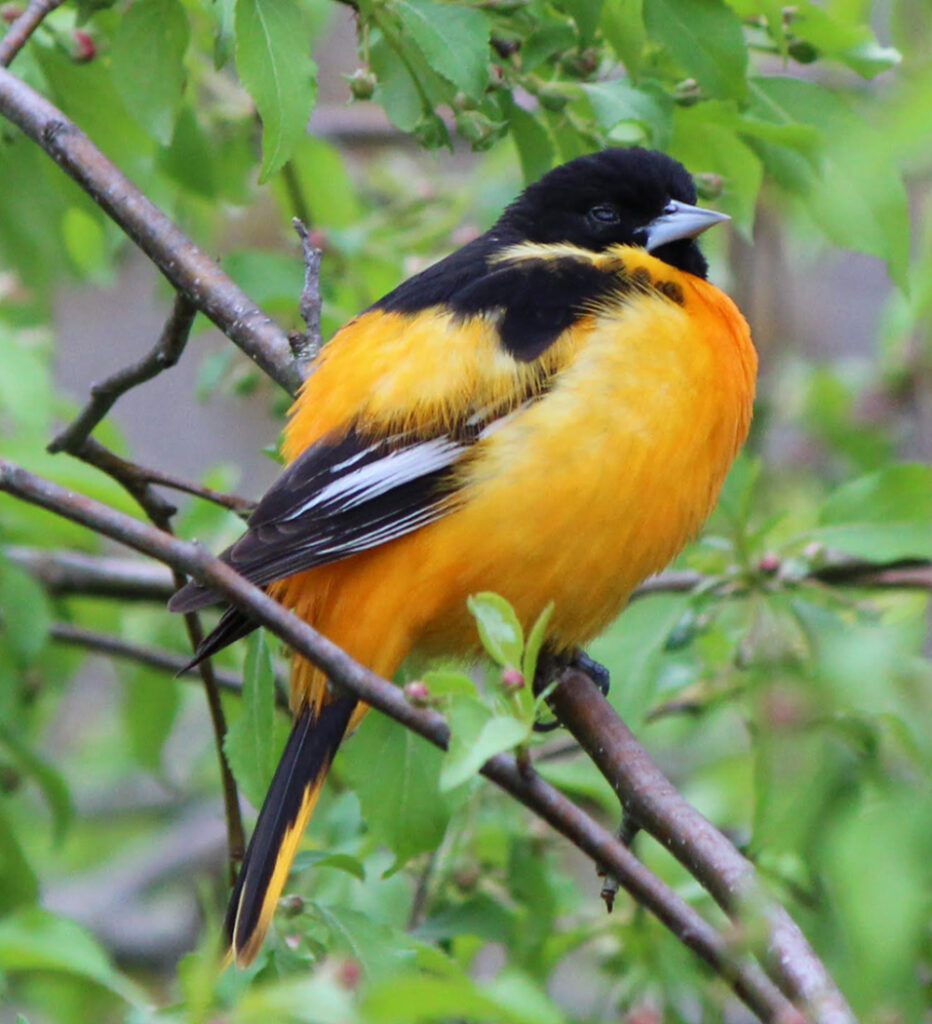
Even birds that we associate with eating seeds or fruits (like the oriole below), still feed their young caterpillars.
This is why native plants are important: to feed baby birds in your garden, the adults need caterpillars, which are mostly going to be found on native plants. For instance, oaks (Quercus) and goldenrods (Solidago) support 450 and 135 species of caterpillars in our area, while hostas (Hosta) and daylilies (Hemerocallis) support none (because they didn’t evolve alongside our native insects). Woody plants support the most caterpillars: oaks, willows (Salix), plums (Prunus) and cherries (Prunus avium), birches (Betula), and apples (Malus). The best herbaceous plants are goldenrod, strawberry (Fragaria), sunflower (Helianthus) and joe pye weed (Eutrochium purpureum).
POLLEN-SPECIALIST BEES (and other insects):
We have all likely heard messages about our native bees and how to promote them through bee hotels and having pollinator gardens. What we hear about less is the pollen-specialist bees, which like the caterpillars, have evolved specific relationships with a group of closely related plants. The shape of the bee’s head and the hairs on her body will allow her to pick up pollen from the plant she has evolved with (This is in contrast to the generalists that can visit many different types of flowers and are the ones often targeted by pollinator gardens). These specialist bees are in the greatest peril; as their host plants decrease in populations, so do the pollen-specialist bees. Unlike bumblebees, these solitary, ground-nesting bees don’t have common names, only Latin names. This makes them a little hard to get to know. Happily, most of these bees are supported by a handful of native plants: sunflowers, goldenrods, asters (Symphyotrichum), Rudbeckia (Rudbeckia), Coreopsis (Coreopsis), Bidens (Bidens).
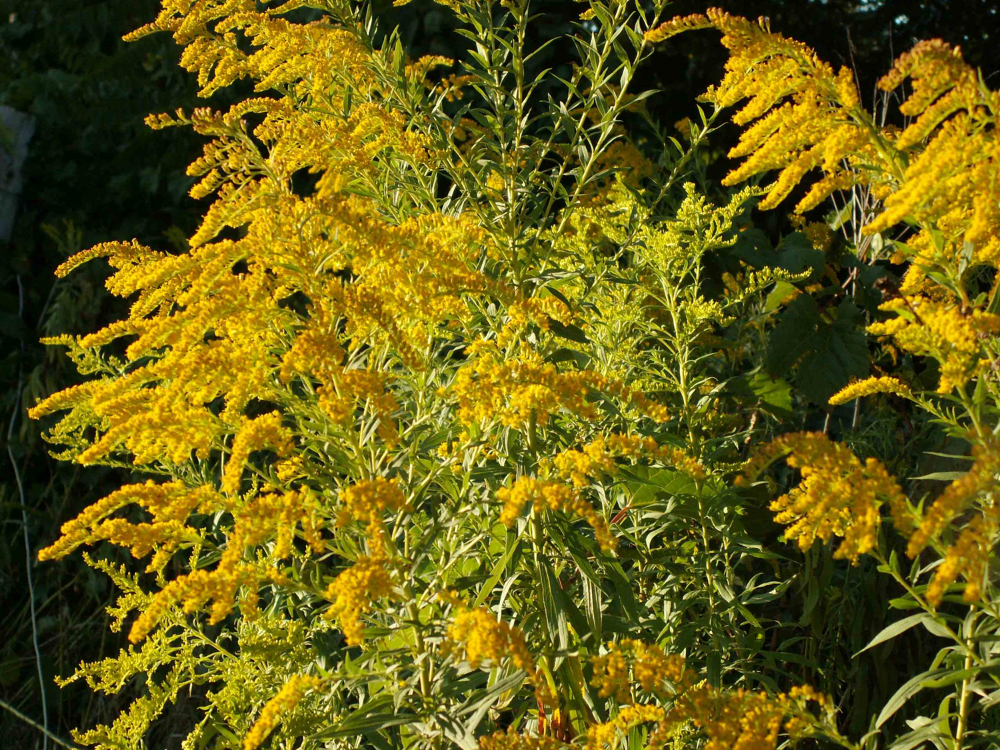
We all have (hopfully) our native milkweeds (Asclepias) growing in the garden for monarchs (which are a species of special concern in Ontario), but what about New Jersey Tea (Ceanothus americanus) for the endangered Mottled Duskywing Butterfly to lay her eggs on? We have several threatened and endangered butterflies that have specific relationships with native plants.
If you want the most efficient plants for supporting both birds (caterpillars) and the specialist bees, then you will want to plant high bush blueberry (Vaccinium corymbosum) and cranberry (Vaccinium subg. oxycoccus), willows (many can be kept as shrubs), goldenrod, asters (Aster), sunflowers and Rudbeckia.
By growing native plants in our gardens, we help conserve other wildlife through the relationships they have evolved with the plants over millions of years. Pick up some seed or plants and give a new native plant a chance in your garden!
See this padlet for links to resources: keystone plants (best plants for caterpillars and bees), growing conditions of plants, list of native plants in our region.


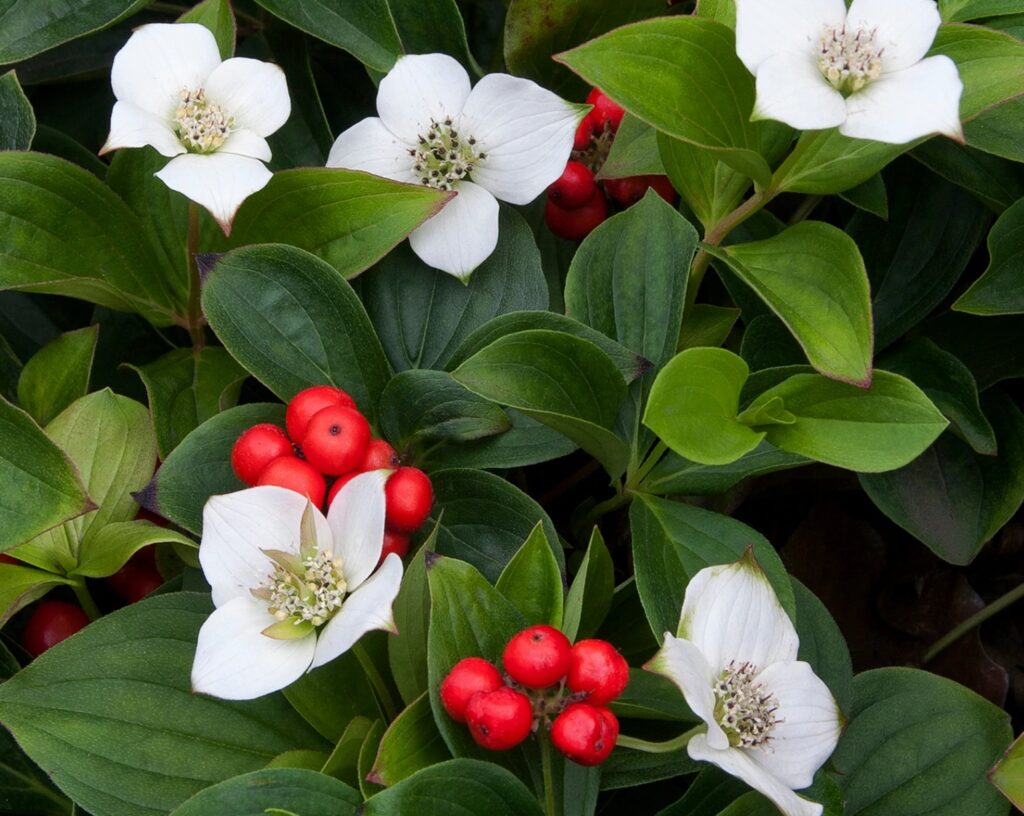
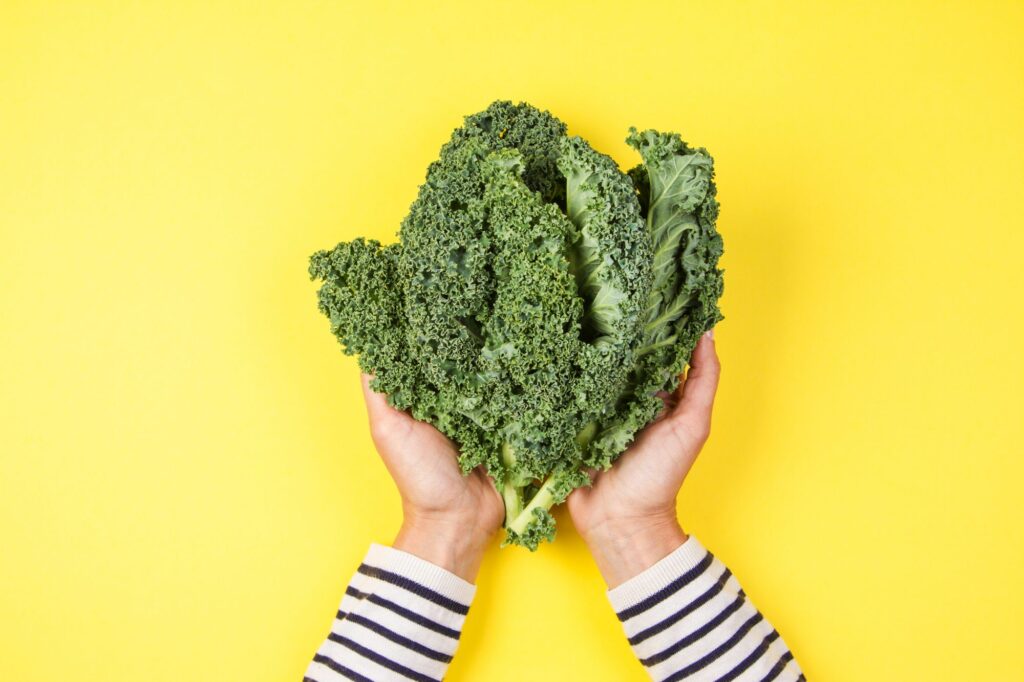
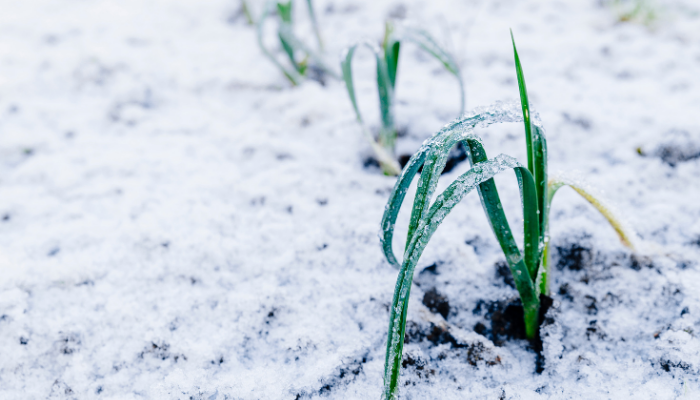
About The Author: Amy Turnbull
Scientist, researcher and professor at Fanshawe College. Avid grower of edibles in her home garden.
More posts by Amy Turnbull